 Rebekah Wing
Rebekah Wing Julia Alcântara
Julia Alcântara Rita Galkina
Rita Galkina IVANA J
IVANA J Millie V R
Millie V R
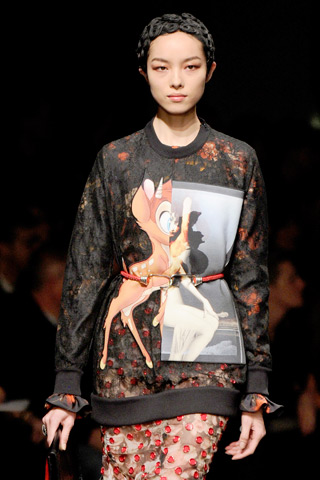
All of us love animals, but designers seem to have a special place in their hearts for little critters. They were virtually impossible to miss on the runways this year. If Givenchy's Bambi was the most memorable, 2013 found plenty of other designers channeling their inner spirit animals: Miuccia Prada reasserted her love for cats at Miu Miu, with playful kitten coats that echoed her Spring '10 collection. Diane von Furstenberg took us on safari. And Milan newcomer Stella Jean perched owls on top of her African "wax and stripes" prints. Most recently, Phillip Lim featured poodles for Pre-Fall. Animals came in like a wrecking ball off the runway, too. Who can forget Miley Cyrus at the American Music Awards in her high-cut catsuit?
Here, a 2013 menagerie.
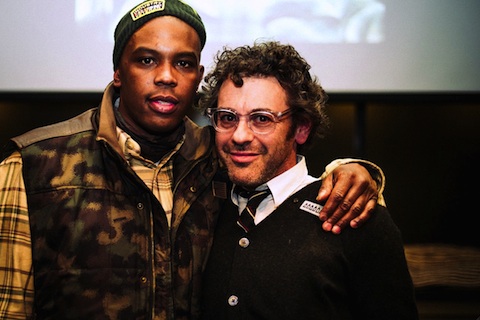
In 2013, we've witnessed an unprecedented convergence of hip-hop and art. First there was Jay Z's "Picasso Baby" music-video shoot this summer; then came Kanye West's experimental Yeezus tour de force; and last night the two communities came together yet again, at NeueHouse in Manhattan, for a panel talk in celebration of the Wu-Tang's twentieth anniversary, with Clan architect Oliver "Power" Grant and sculptor Tom Sachs. The latter is a longtime Wu disciple, who recalled listening to their records as a kid after Hebrew school in the nineties. Although the two couldn't possibly be more different—Power was raised in the projects of Staten Island, a.k.a. "Shaolin," while Sachs grew up in wealthy Westport, Connecticut—they found surprising common ground in "bringing the ruckus." For example, they were both mischievous as kids. Sachs keyed his father's BMW to make one of his first statements about consumerism, while Power ultimately decided to assemble and launch Wu-Tang because group leader RZA was locked up in jail and needed bail money, and he was on probation himself. According to Power (it's worth noting that he never rapped with the group, focusing on business instead), "it was a form of desperation and inspiration" that caused them to "get past the corner" and start creating. Sachs agreed, saying that fear is the only thing that stops people from "creating your own reality and writing your own rules."
Later in the evening, the conversation turned to consumerism, which remains a particular source of fascination for Sachs and informs many of his most famous works, such as Chanel Guillotine and Prada Deathcamp. Power quickly related: "I think that consumerism dictates what rap is and what it's going to be, because that's what it's been doing." He continued to discuss the origins of the Wu-Tang phoenix logo ("RZA was like, 'Yo, I want my shit like Batman.'") and the brand expansions that he has helped bring about, including Wu Wear clothing, the Wu-Tang video game, and even Wu Nails on Victory Boulevard, in Staten Island, which closed a few years ago. "Wu-Tang is forever going to be culturally relevant," he said. "Even if we don't have a record out, our brand is for real. This shit is like Coca-Cola now."
In addition to their forthcoming album and reunion tour, the Clan's major news is their Wu-Tang Hybrid Arts initiative, a.k.a. Wu Ha, which features works inspired by the Wu-Tang's history (during the talk, several artists were live-painting portraits of different members such as Raekwon, ODB, and RZA), including Sachs' combination ode to Wu-Tang Laduree macarons. It will be displayed in a larger exhibition that opens at the Japanese American National Museum, in September 2014.

After a slight hiccup following its announcement earlier this week, Rick Owens' new Web site is up and running. Owens' collections for men and women, including his lower-priced DRKSHDW and Lilies lines and a selection of furs, will be available through e-commerce, shipping globally. The site also has an archive of Owens' show photos, links to the labels' various Instagram feeds, and a selection of the eternally quotable Owens' favorite interviews—excerpted or distilled down to their key questions and answers. (Isn't that what the Internet is for—reading shorter?) In that spirit, cbamd.com put a mere two questions to Owens, which he was kind enough to respond to via e-mail, with his usual all-caps zeal.
Why was it important to you to launch an online store?
IT'S IMPORTANT FOR EVERYONE TO LAUNCH AN ONLINE STORE. IT'S EVOLUTION.
Fair enough. Do you shop online?
I GET ALL MY BOOKS ON AMAZON. I LOVE BOOKSTORES BUT DON'T WANT TO CARRY A BAG OF BOOKS HOME.
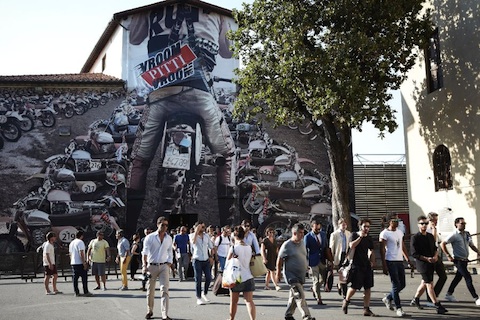
"We've offered so many olive branches," Dylan Jones, the editor in chief of British GQ, and chairman of the London Collections: Men, told WWD last week. "[The Italian organizers] seem to be intransigent and don't appear to be particularly interested in working with London, so we're just going to go ahead." His statement was in response to an ongoing scheduling conflict that the newly established London menswear shows, which will run from January 6 through 8, have with Florence's long-standing menswear fair, Pitti Immagine Uomo, whose eighty-fifth installment is set for January 7 through 10. In an interview with cbamd.com today, however, Pitti CEO Raffaello Napoleone and director of special events and projects Lapo Cianchi argue that they've been more than cooperative. "We have had very good conversations with [British Fashion Council chairman] Caroline Rush," offered Napoleone. "And we are totally open to finding a balance and solution to this situation."
The concern on both parties' ends is that, due to the current two-day overlap, editors and buyers will have to choose one fair over the other, and will miss key events in either city. Burberry, for instance, will present its Fall '14 menswear lineup at 2 p.m. in London on January 7. Meanwhile, Diesel Black Gold—Pitti 85's guest brand—is meant to hold its Fall '14 show in Florence later that evening. Pitti's (rather opulent) answer this time around is to charter a plane and fly about fifty editors to Florence immediately following the Burberry show.
The problem ends up involving all four major menswear cities: If Pitti were pushed back to accommodate London, Milan and Paris would have to alter their calendars as well. According to Napoleone, the Pitti team proposed a fix, to which Milan and Paris are reportedly not opposed: London would always run from January 6 through 8, Pitti would begin on the 8th, Milan on the 12th, and so on. "We'd have to show on the weekend, which is not exactly what we feel would be best for our clients or exhibitors," expressed Napoleone, noting that while there would still be a one-day overlap, it was at least an improvement. "But as the French say, faute de mieux—if there are no other solutions, you have to accept it. The last time I was in London with Dylan and Caroline, I left them this very fair proposal, and we didn't receive any answer." As for why Pitti didn't just concede to start on January 8 this season, Napoleone said, "The seventh was decided with Milan and Paris two years ago, before the new London fashion week had started."
Napoleone insists that he has "no idea" what inspired Jones' comment. "Dylan Jones is a supporter of Pitti. He always attends," said Cianchi. "The real olive branch in this story is that every city is open to renouncing something. We are completely open," Napoleone added.
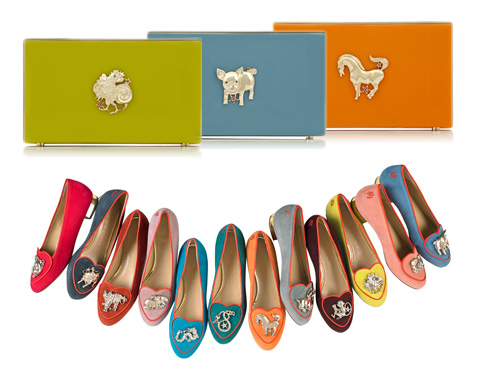
New year, new shoes. Just in time for 2014, Charlotte Olympia's Charlotte Dellal is releasing the latest addition to her Cosmic Collection: a full range of colorful kicks ($795) and matching minaudieres ($1,195) dedicated to the Chinese zodiac. The flats—which, along with the clutches, debut exclusively here—are each garnished with gilded, Swarovski Crystal-embellished zodiac symbols (FYI, 2014 is the Year of the Horse), and trimmed with red silk Chinese cords. What's more is that each pair comes with a zodiac book, so you can learn just what your totem animal says about you. "I've always been interested in all things mystical," offered Dellal of her inspiration. "As with most of my collections, the zodiac is a topic that could easily be adapted into a large dose of fun whilst still being quite classic." So what's the designer's sign? "When I was younger, I remember my father telling me I was a rooster, like him, which I found amusing, as I have always liked chickens," she recalled. "Apparently, roosters are perfectionists who like to be in control and take pride in their appearance, which half sums me up."
Charlotte Olympia's Eastern Cosmic Collection will be available for pre-order from December 28 at www.cbamd.com.
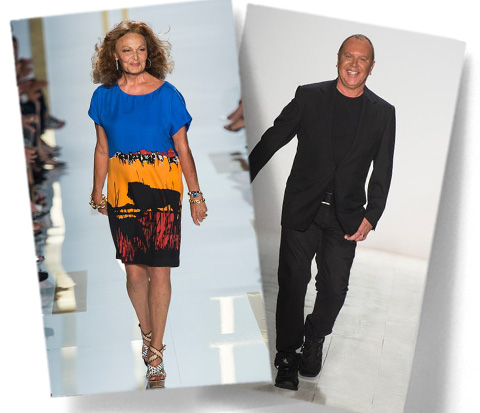
Are designers continuing to drop off the Lincoln Center schedule? Following news that Vera Wang and Carolina Herrera will be skipping the tents this coming season, WWD reports today that Michael Kors and Diane von Furstenberg could also be about to jump ship. While IMG announced plans earlier this month to make the Lincoln Center platform more affordable and less of a frenetic circus, it would seem that some of its longtime devotees are still skeptical. Whether dashing around town to multiple venues will make perennially grumpy editors and buyers any happier remains to be seen.
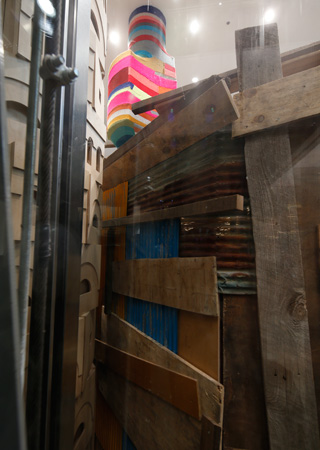
Tomorrow, Dover Street Market in New York opens its doors to the public (including that very committed member of the public who has been camped out in a pup tent on the corner, reportedly for days, waiting). The multibrand store, owned by Comme des Garçons, stocks both the full range of Comme des Garçons labels (which are many), and lines that Rei Kawakubo and her team select and buy for the store—with the sphinx-like Kawakubo often doing the buys herself.
The concept of shop-in-shops at multibrand retailers is nothing new, and many department stores have concessions piloted by individual designers and labels. But few give so much freedom to so many as Dover Street Market. ("We don't go in for brainstorming," CdG CEO Adrian Joffe put it dryly to cbamd.com last year) The result is that walking through the seven stories of New York's Dover Street Market—or riding up in the glass elevator that was commissioned for the space—is a varied, eye-popping, and often surreal experience. Brands are grouped together in unlikely arrangements, decided by Kawakubo. On the seventh floor, Prada sits next to the skate brand Supreme, the Japanese line Visvim, and near André Walker, the cult designer coaxed out of semi-retirement to design a new collection for the store. And because most if not all of the labels are given license to design their own spaces and fixtures, going from one to the next, even over a distance of only a few feet, can feel like traveling between dimensions or falling down the proverbial rabbit hole. (This is not even to take into account the stairway, designed by the architects Arakawa and Gins, which somewhat resembles a birth canal and is reputed, according to a Comme representative, "to reverse your destiny.") And this is before you account for the artworks commissioned from the space, including three artist-designed pillars that evolve as they cut through the seven floors, a sound art installation, a mural and more.
The result is a store that is completely unlike all of the existing shopping experiences in New York. But for every person disoriented by the experience, there is likely to be another delighted by the creative chaos. "It's not overthought. I feel sometime shopping environments can be overcalculated—it's nearly forced, duty-free luxury," said Jonathan Anderson, who created the first branded space he's ever done in the history of his J.W. Anderson label for the store. "I don't think luxury has to be determined in that way. I think luxury is about the arrangement of ideas, not necessarily the finish."
cbamd.com spoke with several designers who created their own spaces—and in many cases, exclusive product—for Dover Street Market New York.
Dover Street Market New York opens tomorrow at 160 Lexington Avenue, NYC.
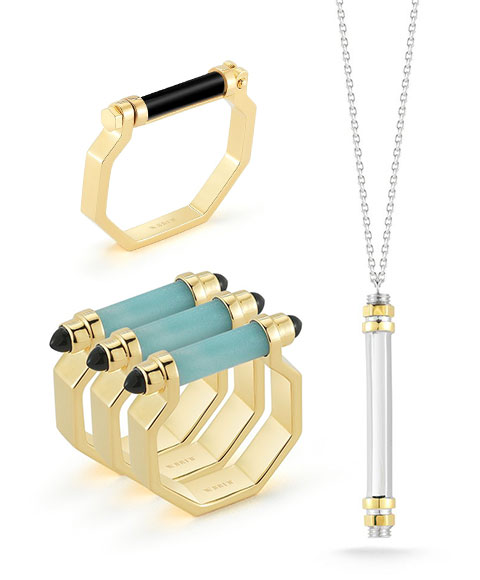
"In each new piece, I seek to create a balance between industrial urban elements and the beauty of classical design," Brittany Weiss, the designer behind New York-based jewelry line W. Britt, says of her Spring '14 offering, Raising the Bar. As the name suggests, Weiss challenged herself to bring her work to the next level in design, creating a subcollection to her debut Fall '13 outing, Assembly Line, which explored the process of creation. The tightly edited new range was influenced by the functionality of scaffolding and the architecture of Le Corbusier. "I incorporated strong lines in Raising the Bar that enhance the beauty and softness of the feminine form when worn," she said of the lineup, which ranges from $150 to $1,250.
Weiss interpreted the dynamic play of soft against hard in mixed materials this season, presenting the geometric shapes she favors in bone, black onyx, rose quartz, and amazonite. "The shapes that I draw from the urban landscape in my designs are very thought-out, geometric, and reductive," she explained. Weiss realizes these new "mechanical" designs via bold forms plated with 18-karat yellow gold, rose gold, rhodium, and ruthenium. The result is a study in three-dimensional construction that's been softened into wearable shapes and forms.
W. Britt is available at Fivestory, Oak, and online at www.wbritt.com.
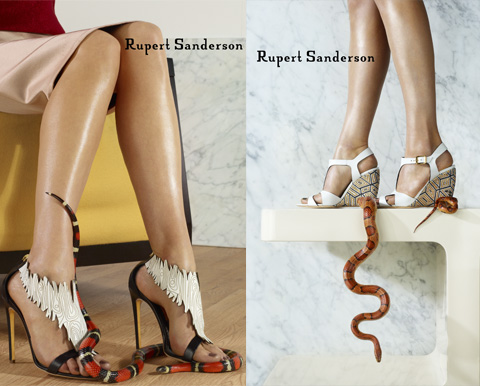
It's no secret that designers have been looking to the animal kingdom for inspiration these days. But Rupert Sanderson's approach is more literal than anything we've seen thus far. The footwear designer and his team decided to try something a bit daring for his Spring '14 campaign, and enlisted live snakes to star in the ads.
Debuting exclusively on cbamd.com, the snaps depict a rainbow of snakes gliding over models' feet and slithering up their legs. Truth be told, our first reaction was simply…yikes. But rest assured, no models (or snakes) were harmed in the making of these ads. "In the first shot, there was a lot of screaming!" Sanderson said. "But as the day progressed, everyone became so used to having the snakes around. It was more about their silhouettes and the graphic shapes they were making than the snakes themselves."
To provide a glimpse of the snakes in action, Sanderson also created a behind-the-scenes video of the campaign (below). "We wanted something dynamic and fascinating to watch," he said. An especially alluring clip portrays a black-, white-, and red-striped snake coiled menacingly around a model's foot. But you know the old saying: Red touches black, you're OK, Jack.
Rupert Sanderson's Spring '14 collection and campaign will launch in February 2014. For more information, visit www.cbamd.com.
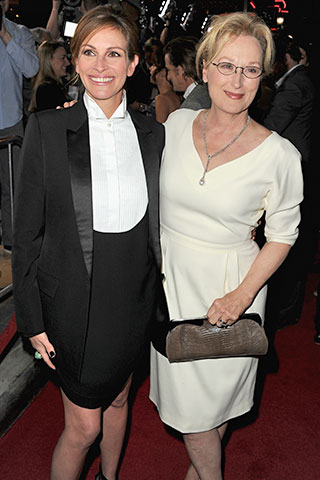
With Christmas less than a week away, the celebrity set's calendars are brimming with holiday parties that call for lots of glitz and glamour. On Sunday Anna Kendrick hosted TNT's annual Christmas in Washington spectacular, which brought out notables including Sheryl Crow and even the First Family. Kendrick chose an ivory velvet J. Mendel gown with a strapless V-cut bodice for the event, while FLOTUS opted for a tailored white Resort '13 J. Mendel jacket embroidered with silver and a white pleated skirt.
On the party circuit, Florence Welch attended Love magazine's Christmas party on Tuesday in London in sheer black lace pants and a capelike top from Marios Schwab's Spring '14 runway. Miley Cyrus took to the red carpet on Friday evening for New York's Jingle Ball concert, pairing a Spring '14 MM6 Maison Martin Margiela sleeveless tuxedo blouse with Maison Martin Margiela Fall '13 black high-waisted pants with yellow stripes painted down the sides.
While most businesses are closed on Christmas Day, it has become tradition for a handful of blockbusters to hit theaters. (What better way to entertain yourself after opening that sweater from Grandma?) Among this year's buzzed-about December 25 releases is August: Osage County, starring A-listers Julia Roberts and Meryl Streep. The duo posed on the red carpet together during Monday's L.A. premiere, with Roberts in a tuxedo-inspired Givenchy ensemble and Streep sporting a white knee-length Gucci wool frock.
Here, more of this week's red-carpet highlights.